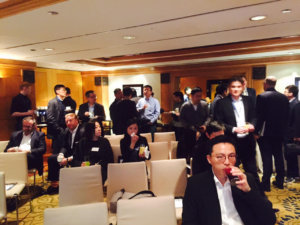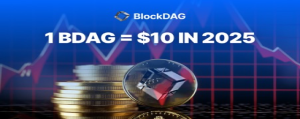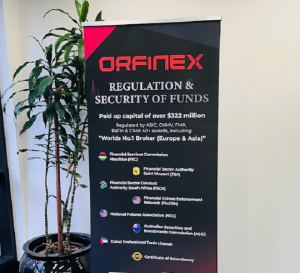Seeking the FX hedge fund? Look east
“People want multiple investment and trading styles. For example, some customers want their core investment in low cost ETFs but want to trade around the outside of those with 15% alpha generators, hence we see that nobody wants to stick to one type of trade. They want cost, transparency and value for money” – Adam Reynolds, CEO APAC, Saxo Bank

For a considerable amount of time, beginning very shortly after the rise to popularity of third party platforms such as MetaTrader which paved a very easy route to market for a litany of retail FX firms, the sales channel has been structured in such a way that strategic partners, such as introducing brokers (IBs), have been key components.
The rise to prominence of highly professional introducing brokers over the years has led to a highly developed network globally, which has not only refined the ability to localize whilst reducing operational costs but also has replaced the organic sales channel in some cases.
Many brokerages have placed continued emphasis on IBs over the past decade, however the general consideration of an IB is that of either a portfolio management company that uses an automated trading system (usually an Expert Advisor, or trading robot) to attach customer accounts to a MAM terminal, or retail IBs that refer their network of self-directed traders to a brokerage.
Both are proven models and are indeed not only here to stay but increasing in numbers and utilization.
One method of onboarding that is often overlooked by FX firms is the emergence of hedge funds that are not based in their traditional heartlands, those being the magnificent post-Georgian buildings surrounding the verdant grasslands of St James Park in London’s West End.
Hedge Fund operators in London are as traditional as they are established. An old Etonian or Harrovian tie marks out the maximum level of rivalry that would ever come to the surface during gentlemanly discussions at the RAC Club about alternative investment funds, conducted in the most appropriate Received Pronunciation Queen’s English.
Perhaps this mild-mannered yet aristocratic imagery that surrounds Britain’s private wealth managers is what puts off the retail FX brokerages from considering them to be equally important strategic partners.
It does not need to be like this, however, because hedge funds nowadays are not just the preserve of the cut-glass decanter lined wood paneled offices of Westminster’s SW1 postcode area.
They are now rapidly increasing in size in Asia, particularly within institutional centers which have been heavily influenced by British business and British banking institutions, such as Hong Kong and Singapore.
Singapore is a gateway to Malaysia, as it has tremendous similarities, hence the new middle classes, plus the Chinese wealth managers residing in Kuala Lumpur are maintaining managed funds in Singapore.
Hong Kong is China’s gateway to the global banking world, and its wealth management structure traditionally echoes that of London, but is now home to the last 20 years worth of new money from the mainland.

Yesterday, FinanceFeeds spoke to a brokerage in Europe which is beginning to look at onboarding hedge funds as B2B partners.
“The main sticking point is that many retail firms do not understand the institutional and professional FX business well enough to attract hedge funds” said a senior executive from the firm.
This is a commentary of great importance, especially bearing in mind that today, ESMA’s new rulings on leverage restrictions come into force, and by aligning with proprietary trading entities, this would not be an issue, yet it is for small retail accounts, hence large volumes could be processed without the bugbear of retail leverage restrictions. A double win, effectively.
“We just brought in a hedge fund in Asia, and are now adapting resources to handle it” said the senior executive. “I fully understand the value of this and we have to move our business forward to partner with professional trading entities and wealth managers with private funds” he said.
Some firms are already doing this, and are looking toward Asia, not Europe.
Recently in London, FinanceFeeds spoke to Meir Velenski, CEO of Velenski Financial Group, an executive with a very clear understanding of B2B partnerships.
“The main driver behind the European directive is simple, that being consumer investor protection. If we are to look at the main background to this directive, it is clear on what the regulators want to achieve, that being to stop retail electronic trading firms exploiting the man in the street” said Mr Velenski.
“Too often, the investor, trader and consumer has had very little recourse with the might and power of the financial instructions. Too many times has the trader or investor turned to providers and financial houses to complain about being mishandled or trades being wrongly booked, or positions being erroneously closed to name but a few and nothing happens.”
“The investor in the eyes of the regulator has been so badly done to over the years that they have take draconian action to right this wrong hence MiFiD II has now put the onus and responsibility on all providers for intense record keeping to correct something that really should have been dealt with by the firm.”
“The regulator now requires that retail clients are classified as either experienced, professional or new. This limits the firms to freely work as they have done so far” he said.
This level of bureaucratic wrangling would not be part of the equation if hedge funds are involved.
Saxo Bank is one firm that realizes this very clearly.
The company, which has made a dedicated shift toward Asia over the past few years, has stated that retail firms MUST move on. During a private conference in Hong Kong at which FinanceFeeds was present along with several hedge fund managers from across Asia, the firm deduced that the future is API, multi-product wealth management, democratized prime brokerage and high tech execution.
At the meeting in Hong Kong, Saxo Bank’s APAC CEO Adam Reynolds got straight onto that important point.
“Customers want algorithmic capabilities and charts that interact with platforms, and to be able to clearly see what their holdings are. A true multi-asset strategy is a must these days, and from the point of view of a client, they’re looking at asset allocation” said Mr. Reynolds.
“Even with retail trading in today’s environment, the idea of having one platform for FX, another for shares, and another for exchange-traded futures is not a great user experience. That is the challenge that a lot of institutions have today. The history of banking has always kept a silo mentality, therefore today’s requirements are a new challenge for long established institutions” observed Mr. Reynolds.
“I spent 12 years at Merrill Lynch, during which time the bank spent an inordinate amount of money developing its own single dealer platform, which probably to this day many people have never heard of because it is not as good as Velocity, Autobahn or BARX, even though it cost a fortune. It was only designed for ISDA (International Swaps and Derivatives Association) and and CSA (Credit Support Annex) and due to this type of dynamic existing, trying to adapt that type of system alone to end users has been difficult for banks to do” – Adam Reynolds, CEO for Asia Pacific, Saxo Bank
Mr. Reynolds continued “many large institutions are stuck with expensive technology. Talking to hedge funds, many want to trade on ideas and they want their provider to bring them trade ideas. Some of the bigest traders in the world are the biggest hedge funds, and they want some direction and thus as a platform provider being able to provide the chance for these hedge funds to build algos, and share ideas with clients is very important part of the value proposition.”
“Equally, digital onboarding, which although challenged in some areas particularly in Hong Kong when you need to see a client face to face, is a vital requirement. Although there are current barriers, the regulatory environment will become more evolved so that it becomes more possible around the world to onboard clients completely by digital means” said Mr. Reynolds.
“People want multiple investment and trading styles. For example, some customers want their core investment in low cost ETFs but want to trade around the outside of those with 15% alpha generators, hence we see that nobody wants to stick to one type of trade. They want cost, transparency and value for money. That part of the equation changes every year and always gets cheaper as technology evolves to provide the service and thus if you are a broker that doesn’t have that kind of technology based investment, you’ll get left behind in terms of operating costs” – Adam Reynolds, CEO, Asia Pacific, Saxo Bank
Mr. Reynolds believes in a technology driven prime brokerage solution. “When we talk about working with partners, we are talking about APIs and trade execution along with trade confirmation going backwards and forwards down the line” he said.
“It is very important for brokers to be able to provide client by client info for their customers, including real time holdings and real time margin information” he said. “Even end of day files for regulatory reporting is very big part of it. It is all about providing digital tools focused toward the end client to keep the cost of servicing brokerages down.”
“Looking at traditional banks with their prime brokerage services, usually, a designation notice is obtained, and is then provided to liquidity providers and they carve out some of that limit to give to each liquidity provider. Splitting for example $100 million amojng 5 liquidity is very ineficient and there is no means of using that type of set up on a real time basis. Banks also often subsidize their prime brokerage businesses by providing liquidity to clients. They then use that to help pay for the services they provide with prime brokerage” said Mr. Reynolds.









